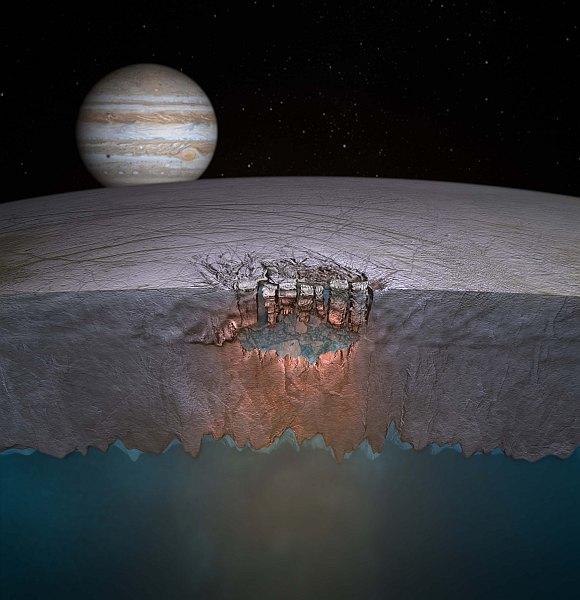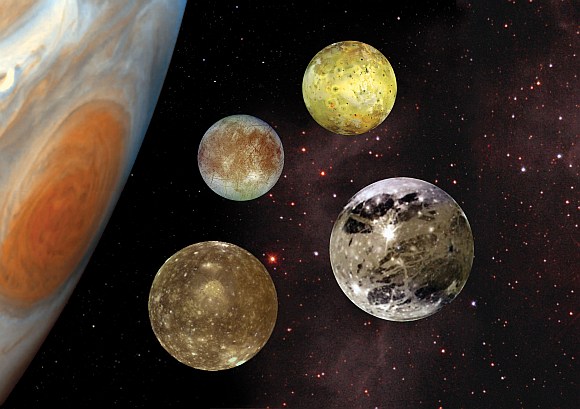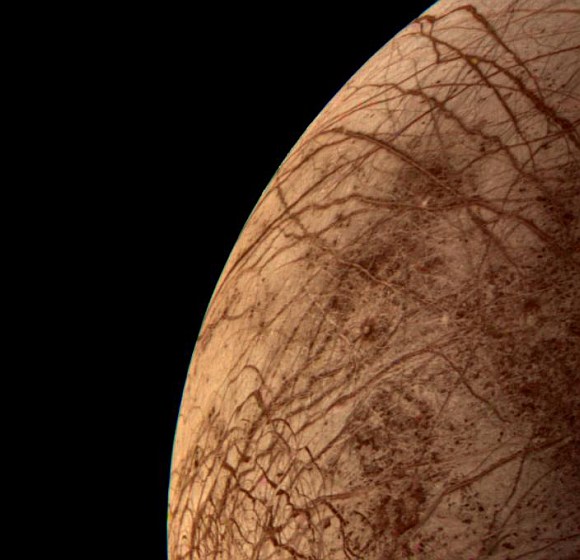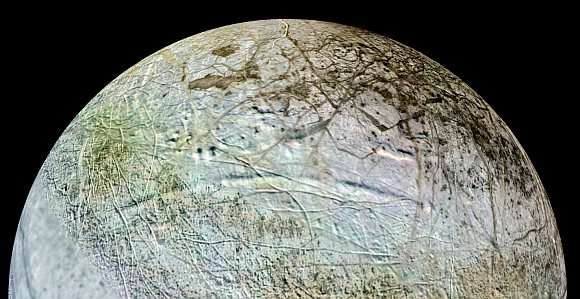 | « Back to article | Print this article |
AMAZING PHOTOS: Great lake on Jupiter's icy moon
Scientists have discovered what appears to be a body of liquid water as vast as the volume of the North American Great Lakes locked inside the icy shell of Jupiter's moon Europa, suggesting a potential new habitat for life.
The water could represent a potential habitat for life, and many more such lakes might exist throughout the shallow regions of Europa's shell, wrote lead author Britney Schmidt, a postdoctoral fellow at The University of Texas at Austin's Institute for Geophysics.
Click NEXT to read further...
AMAZING PHOTOS: Great lake on Jupiter's icy moon
Further increasing the potential for life, the newly discovered lake is covered by floating ice shelves that seem to be collapsing, providing a mechanism for transferring nutrients and energy between the surface and a vast ocean already inferred to exist below the thick ice shell.
"One opinion in the scientific community has been, 'If the ice shell is thick, that's bad for biology — that it might mean the surface isn't communicating with the underlying ocean," said Schmidt.
Click NEXT to read further...
AMAZING PHOTOS: Great lake on Jupiter's icy moon
"Now we see evidence that even though the ice shell is thick, it can mix vigorously. That could make Europa and its ocean more habitable," he stated.
The scientists focused on Galileo spacecraft images of two roughly circular, bumpy features on Europa's surface called chaos terrains.
Click NEXT to read further...
AMAZING PHOTOS: Great lake on Jupiter's icy moon
Based on similar processes seen here on Earth -- on ice shelves and under glaciers overlaying volcanoes -- the researchers developed a four-step model to explain how the features form on Europa.
The scientists have good reason to believe their model is correct, based on observations of Europa from the Galileo spacecraft and of earth.
Click NEXT to read further...
AMAZING PHOTOS: Great lake on Jupiter's icy moon
But, because the inferred lakes are several kilometres below the surface, the only true confirmation of their presence would come from a future spacecraft mission designed to probe the ice shell.
The finding appears as an advance online publication of the journal Nature.




